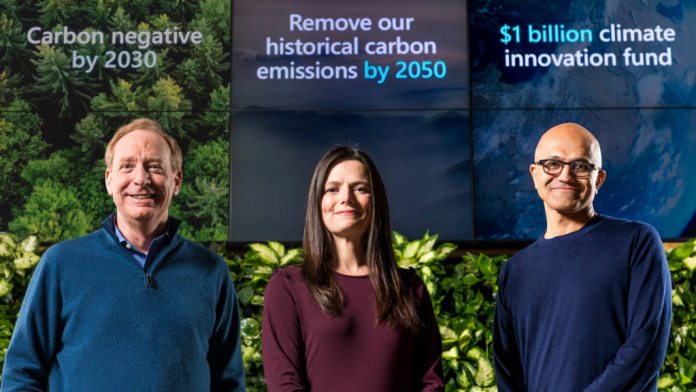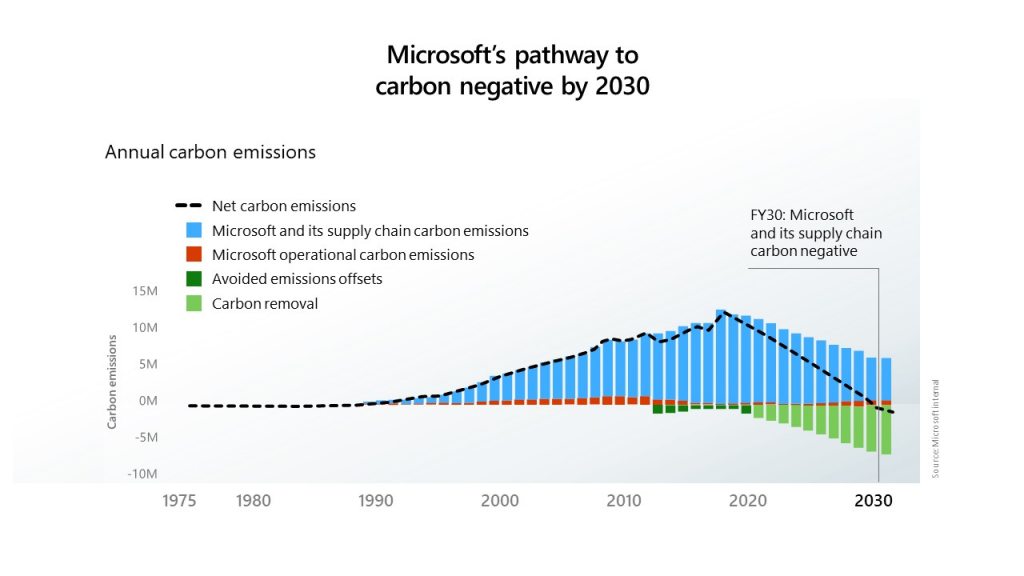“While the world will need to reach net zero, those of us who can afford to move faster and go further should do so,” Microsoft President Brad Smith said of the new commitment. “That’s why today we are announcing an ambitious goal and a new plan to reduce and ultimately remove Microsoft’s carbon footprint.” To reach its target, the company will require ambitious innovations across multiple sectors. After reaching carbon neutrality, it wants to work on removing existing carbon from the atmosphere. To aid in those efforts, it has created a $1 billion Climate Innovation Fund to accelerate new tech. By 2050, it wants to remove enough to offset all the historical emissions Microsoft has made since its founding in 1975.
Smith says Microsoft will also take drastic action to reduce the carbon produced in its supply chain. The graph above shows the projected pathway to net-zero, falling from 16 million metric tons today to 0 by what looks like 2029. This will extend to the value chain as well as supply.
Public vs Private Policy
In September 2019, employees criticized the company for a partnership with oil giant Chevron. Its deal was designed to “accelerate the creation of innovative petrotechnical and digital technologies”, but workers accused it of “making millions of dollars in profits by helping oil companies extract more oil”. Microsoft published its commitment to carbon-neutral Xbox’s just days later, seemingly shifting the focus to what it is doing, rather than what it refuses to. In November it announced yet another oil-related partnership, this time with Suncor Energy. “While there is a lot to celebrate in Microsoft’s announcement, a gaping hole remains unaddressed: Microsoft’s expanding efforts to help fossil fuel companies drill more oil and gas with machine-learning and other AI technologies,” said Greenpeace senior campaigner Elizabeth Jardim. The tech giant argues that by working with these companies, it can increase efficiency and show the value of renewable tech, therefore cutting their damage. However, critics suggest that those outward ambitions are clearly at odds with the plans of fossil fuel CEOs, who may just exploit the efficiency to further drill the earth. On top of all this, there’s the joining of the Climate Leadership Council, a group of oil giants that protected its members from historic climate change liability at the time Microsoft joined, but has seen some reform in recent times. Going forward, the Redmond giant has committed to lobbying for policies that advance the world’s carbon efforts. It says it will use its voice to support legislation that removes regulatory barriers that slow carbon reduction, as well as energy transparency, pricing mechanisms, and research/collaboration. Even so, the efforts of a single company won’t be enough. Microsoft sees its main role here as a provider of energy-saving and carbon-tracking cloud tech to others. Part of this effort is its new Microsoft Sustainability Calculator and a partnership with Vattenfall to let its customers choose the green energy they want and ensure they match their goals. In providing such services, it will help the planet, but you can also bet it’ll make a tidy amount of cash on top.





